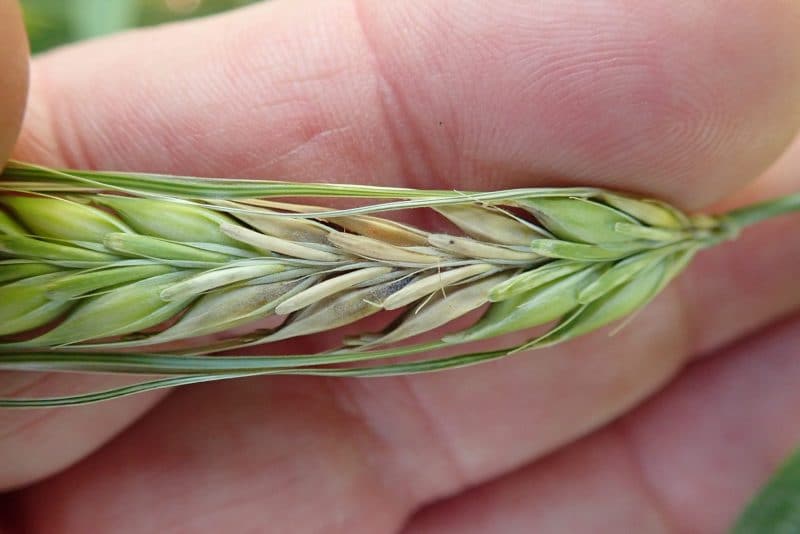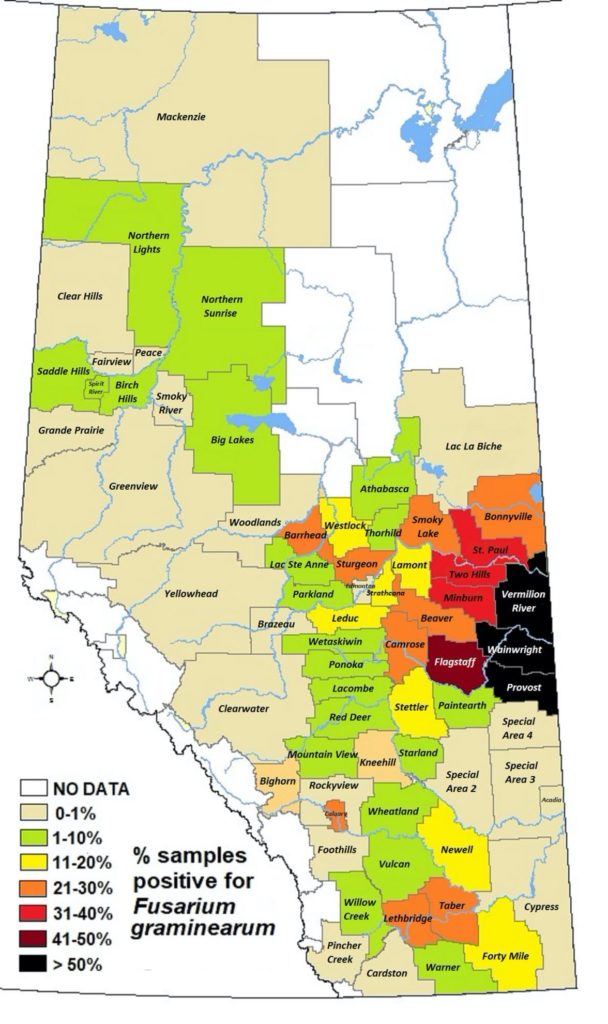A map showing Fusarium graminearum seed infection in Alberta between Sept. 1 to Dec. 31, 2020 has been released by the Alberta Seed Processors (ASP). This map is part of a new phase of fusarium head blight management in Alberta.
“This project directly aligns with ASP’s goals of supporting agriculture in Alberta by constantly improving the services and capacity of our seed and grain processors so we can ensure the agricultural value chain has opportunity for the best possible outcomes by identifying possible limiting factors,” Monica Klaas, ASP’s general manager, says in the report.
The findings for the map were gathered from tests completed by SGS Canada, Seed Check Technologies and 20/20 Seed Labs. The test results were merged into one database, catalogued by postal code and then grouped by municipality. The data includes seed testing results for both farm-saved seed and pedigreed seed. The report notes the sample location doesn’t necessarily indicate the seed was produced, nor is destined to be planted, in the catalogued municipality.
Results from the tests were reviewed by Michael Harding, research scientist for plant and bee health in the surveillance section of Alberta Agriculture and Forestry. The Alberta Wheat and Barley Commissions supplied further agronomic and management input, the report notes.
The funding for the project came from the Canadian Agricultural Partnership (CAP) and is part of a three-year project on Alberta fusarium seed infection. The main goal of the project is to better understand how farmers can manage, control and prevent fusarium, the report notes.






